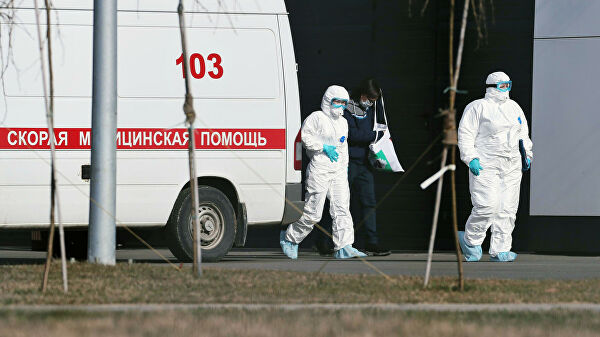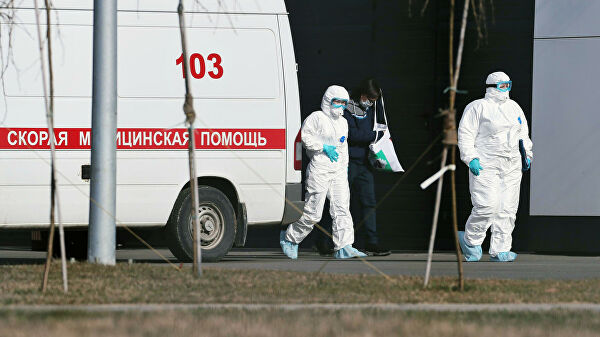As of May 12, Russia has the second-highest number of confirmed cases with COVID-19 after the United States. Nevertheless, death rate remains relatively low. According to the latest data 290,000 confirmed cases were registered, more than 70,000 patients recovered and around 2,700 people died. As of now, the COVID-19 death rate in Russia is relatively low. Conceivably, this is due to early diagnosis, free access and treatment of COVID-19 patients as part of the UHC guaranteed package for all. In terms of provision of care, the state-owned hospitals which are dominant in the health system promptly restructured and reoriented to the disease outbreak situation. Nevertheless, a thorough analysis and review of epidemiological and clinical evidence should be conducted to see the entire picture.
Russia detected first COVID-19 cases as well as the outbreak relatively later than other European countries. It provided opportunities to analyze how the epidemic developed in other countries and take timely measures to curb the spread of the virus by reorienting the health system to effectively respond to the epidemic. As mentioned earlier, near universal population coverage under the Federal Compulsory Medical Insurance Fund (CMI) and a high number of hospital beds per capita in comparison with other countries were the strength of the system to combat with the coronavirus. Currently, Russia has 818 hospital beds per 100,000 population.
The outbreak happened in early March. Most of the cases were registered in Moscow and attached regions. As the number of cases was increasing, the government decided to close all borders and initially restrict air traffic then roads and railways. Further steps included mandatory isolation that lasted from March 30 to May 12. In order to control movements across cities and territories, digital permits were introduced in every city. The President declared that during these non-working days, salaries will be paid as usual. In Moscow, however, the isolation regime is now being extended till May 31 because of the increasing number of new cases during April-May 2020.
Health system response
The following measures were taken to mobilize the healthcare system:
- Widespread testing to control the spread of the virus. Express diagnostic tests for COVID-19 producing rapid results together with antibody tests were developed. Accordingly, Russia is one of the three countries with the highest testing rate. Around 230,000 tests for COVID-19 are daily performed in the country. Overall 6,65 million coronavirus tests were performed as of May 15. More than 600 public and private laboratories are involved in COVID-19 testing;
- Provision of financial aid and support to regions. The government allocated more than 80 milliard Russian Rubles (1,1 billion USD) to purchase medical equipment, increase the number of hospital beds, ambulances, etc. A number of additional infectious hospitals was reassigned to deal with COVID-19. Additionally, new hospitals for COVID-19 patients were built and equipped with necessary medical supplies and apparatus. More than 242 million Rubles (3.4 Million USD) were allocated to the All-Russian Public Movement “Medical Volunteers” to provide volunteer help for citizens during the pandemic;
- Local production and supplies. Since March 2020, manufacturing of antiseptic products in Russia increased by 6 times. Procurement, import and supplies of ventilators, medical devices and drugs to combat coronavirus were expanded. Additionally, approximately 40 medical devices now undergo simplified registration process, in particular, protective clothes, masks, boot covers, respirators and gloves. Companies producing medical equipment to diagnose epidemic diseases, protective equipment, medicines and other medical products are supported with preferential loans. In addition, restrictions on importing medical goods were removed and import custom duties suspended till the end of September;
- Health workers’ availability and incentives. Russia trained more than 1,4 million of health professionals to provide healthcare in inpatient and outpatient departments to deal with COVID-19. Recognizing the workload and burden on healthcare workers, the government adopted a resolution to increase insurance coverage and pay additional remunerations ranging from 25,000 to 80,000 Rubles (350 – 1,114 USD) to medical personnel treating COVID patients for the period from April to June;
- Research and Development. Currently 7 Russian research centers are working on developing a new coronavirus vaccine. Moreover, temporary clinical guidelines were developed and have been updated regularly for ARVI diagnosis and treatment, and also for prevention, diagnosis and treatment of the novel coronavirus;
- Financial protection. Considering the negatives effects of high medicine pricing, the government controls medicine pricing especially for emergency care, and treatment of infectious diseases. This involves not only medicines, but also medical devices, which are not included in the list of essential goods. The CMI fully covers medical interventions for patients with heart diseases, oncology, and those who are in need dialysis. In view of coronavirus, medical organizations will get compensation from the insurance fund for declined income due to reductions in delivering care;
Social protection
Different social support and protection measures were introduced to protect people during the COVID-19 epidemics. These include social benefits and cash transfers to families with small children in the amount of 5,000 to 10,000 Rubles (70-140USD) depending on children’s age from 3 to 16 years. Unemployed citizens under COVID-19 began to receive monthly allowances in the amount of the minimum wage if they worked at least 60 days and lost their jobs unless it was labor misconduct. All fines for delayed rental payments for housing and community services have been cancelled till January 1, 2021. The government also offers “credit holidays” for those citizens whose income has decreased by 30% in order to ease their loan payment burdens.
Business activity support
The COVID-19 package also included measures to protect the economy and business activities in Russia. These included a moratorium on bankruptcy applicable to companies and individual entrepreneurs in the industries most affected by COVID-19. The government offers “tax holidays” for affected industries and entrepreneurs loan extensions, and reduction in deferred debt. The package also considered temporary reductions in insurance contribution payments for individual entrepreneurs. State, municipal and private properties have become a subject for deferred rental payments till October 2020. Small and medium (SME) businesses affected by COVID-19 similarly can benefit from these direct government financial support programs. The government is fully committed to implement and update the socioeconomic package on a regular basis to support citizens, economy and businesses as a whole during this pandemic period.
Consequences for healthcare system
The above measures undertaken to combat with COVID-19 are aimed at enabling to slow the spread of the infection and ensure timely delivery of qualified medical care. However, it is necessary to take into account the consequences of these measures as well as the epidemic for the health system and the economy.
It is obvious that quarantine will have a negative impact on economic growth in Russia. Central Bank of the Russian Federation expects a decrease in the country’s GDP by 4-6% in 2020. The major contributor to this reduction will be inflation and declines in export that may reach to negative 10% to 15%. The health system will be directly affected by the economic crisis since it together with other social sectors largely depends on government budgetary financing and investment.
Apart from this negative macroeconomic impact, the health system is expected to face some visible challenges in the near future. The Russian medical organizations and healthcare providers operating within the CMI system are already exposed to the risk of underfunding. The main reason is suspension of medical examinations and reduction in the volumes of planned medical care. The government is aware of this and exerting all efforts to improve the situation by compensating healthcare providers for their declining income due to reductions in delivering healthcare services within CMI. However, it is difficult to completely eliminate the risk of underfunding within a short period of time.
Another factor affecting the health system financial stability is additional expenditures associated with COVID-19. Currently, resources are extensively used to purchase medicines, protective equipment and provide additional benefits for healthcare workers, as well as to cover the cost relating to COVID-19 diagnostic tests and medical services. Most part of these expenditures accounts for purchasing capital goods such as ambulances, diagnostic equipment and ventilators. Although these capital investment goods will be used in the future, they are absorbing budgets that would result in reduction of operational and recurrent health expenditures such as medicines, food, etc. It is obvious that such reductions and budget cuts will be a big challenge in the health system. It is also expected that the health service demand will substantially increase because of complications of chronic and non-communicable diseases and treatments which have been delayed during the emergency situation. In many cases, patients are refused to seek medical advice out of fear to get infected with coronavirus. Taking all above into account, the main threat for Russia’s health system is financial stability due to COVID-19 related economic crisis and subsequent decreases in budget revenues at all levels and sources of funding including the Federal Compulsory Medical Insurance Fund.
Acknowledgement: The author expresses sincere appreciation to Dr Dorjsuren Bayarsaikhan for his valuable comments and inputs.



